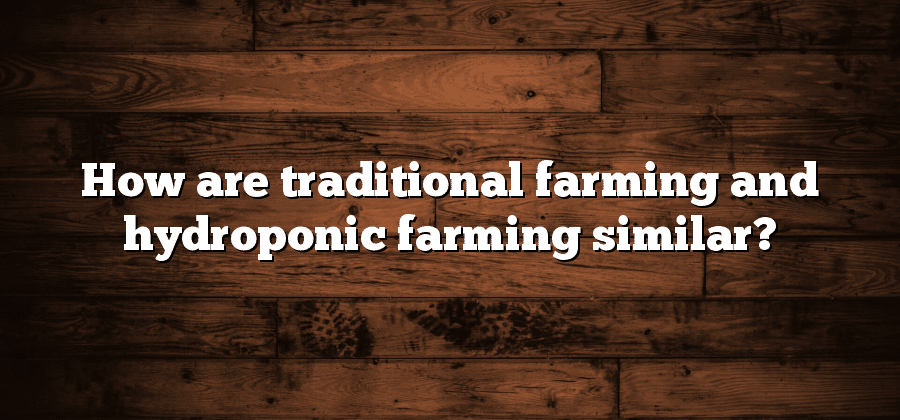Historical Roots: Tracing the Origins of Farming Methods
Farming methods have evolved significantly over time, with their origins dating back thousands of years. The development of agriculture was a pivotal moment in human history, leading to the emergence of settled communities and the end of a nomadic lifestyle. Early farmers began by clearing land and tilling the soil to prepare it for planting. They relied on natural rainfall for watering the crops, and their success depended heavily on the fertility of the soil. These early farming methods laid the foundation for what would eventually become a complex and diverse industry.
In ancient civilizations such as Mesopotamia, Egypt, and China, farming techniques continued to advance. Irrigation systems were developed to provide controlled water supply, enabling farmers to grow crops in arid regions. The use of basic tools, such as plows, allowed for more efficient cultivation of the land. Additionally, the domestication of animals, such as oxen, provided valuable assistance in labor-intensive agricultural tasks. These innovations in farming methods not only increased crop yields but also paved the way for the expansion of civilization and the rise of urban centers.
The next section will explore the modern-day techniques of soil-less cultivation, which have revolutionized the way crops are grown. From hydroponics to aeroponics, these innovative methods have the potential to address the challenges of limited land availability and water scarcity. By eliminating the need for soil, soil-less cultivation offers greater control over plant nutrition and growth conditions. This section will compare and contrast these different growth mediums, highlighting their advantages and limitations. Stay tuned to discover the fascinating world of soil-less cultivation and its impact on modern agriculture.
Soil-less Cultivation: Comparing the Growth Mediums
Hydroponics and aeroponics are two popular methods of soil-less cultivation that have gained significant attention in recent years. Hydroponics involves the cultivation of plants in a water-based nutrient solution, without the use of soil. This method allows for precise control over plant nutrition, as the nutrients can be directly provided to the roots. Additionally, hydroponics minimizes the risk of soil-borne diseases and pests, resulting in healthier and more productive crops.
Aeroponics, on the other hand, takes soil-less cultivation one step further by suspending the plant roots in the air and misting them with a nutrient-rich solution. This technique ensures that the roots receive ample oxygen, promoting rapid growth and efficient nutrient absorption. By eliminating the need for a growth medium altogether, aeroponics offers several advantages. It conserves water, as the misting system uses significantly less water compared to traditional irrigation methods. Moreover, because the roots are not confined to a specific medium, plants grown aeroponically can easily be transplanted or relocated, offering greater flexibility for commercial growers.
Nutrient Management: Balancing Plant Nutrition
One crucial aspect of successful crop cultivation is nutrient management. Properly balancing plant nutrition ensures that crops receive the necessary elements for optimal growth and productivity. Nutrients play a vital role in various plant functions, including photosynthesis, root development, and fruit formation. Therefore, it is essential for farmers and gardeners to carefully monitor and adjust nutrient levels in their soil or growing medium.
To balance plant nutrition effectively, growers must understand the specific nutrient requirements of different crops at different stages of growth. The primary nutrients required by plants are nitrogen (N), phosphorus (P), and potassium (K). These macronutrients are essential for overall plant development and must be present in the right quantities. Apart from these macronutrients, plants also require various micronutrients, such as iron (Fe), manganese (Mn), and zinc (Zn). These trace elements are necessary in smaller amounts but are equally crucial for healthy plant growth. By analyzing the nutrient needs of their crops, farmers can create customized nutrient management plans to provide the ideal balance of essential elements.
Pest and Disease Control: Strategies for Crop Protection
The protection of crops from pests and diseases is a critical aspect of modern agriculture. Various strategies and techniques have been developed and refined over the years to minimize the impact of these destructive agents on crop productivity. One commonly used approach is the use of **integrated pest management** (IPM) techniques, which involve a combination of cultural, biological, and chemical control methods.
Cultural practices play a vital role in pest and disease control. These include methods such as crop rotation, which reduces the buildup of pests and diseases in the soil, and the use of resistant varieties, which are specifically bred to withstand attacks from specific pests. In addition, proper **sanitation** practices, such as removing plant debris and maintaining clean fields, can help prevent the spread of diseases.
Biological control involves the use of natural enemies to control pest populations. This can include the introduction of predators or parasites that feed on the pests, as well as the use of beneficial insects, such as ladybugs, which prey on aphids. Biological control methods are environmentally friendly and help maintain a balanced ecosystem in agricultural fields.
Chemical control methods, such as the use of **insecticides** and **fungicides**, are sometimes necessary to control pests and diseases, especially when infestations or outbreaks occur. However, it is important to use these chemicals judiciously, following **best practices** to minimize their negative effects on the environment and avoid the development of resistance in pest populations.
In conclusion, effective pest and disease control strategies in crop protection involve a combination of cultural, biological, and chemical methods. By adopting integrated pest management principles and implementing appropriate measures, farmers and agricultural professionals can protect their crops and ensure sustainable agriculture for the future.






